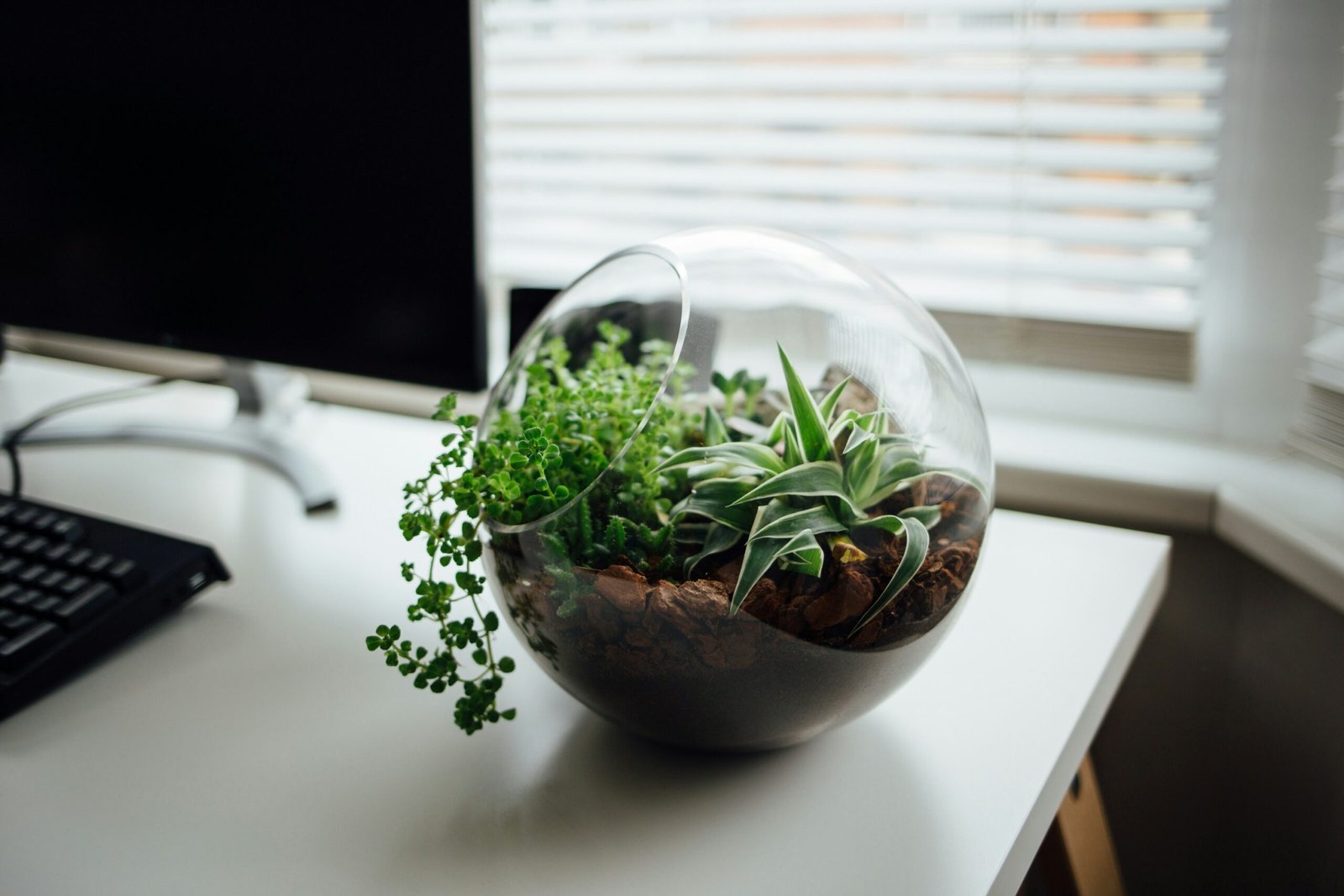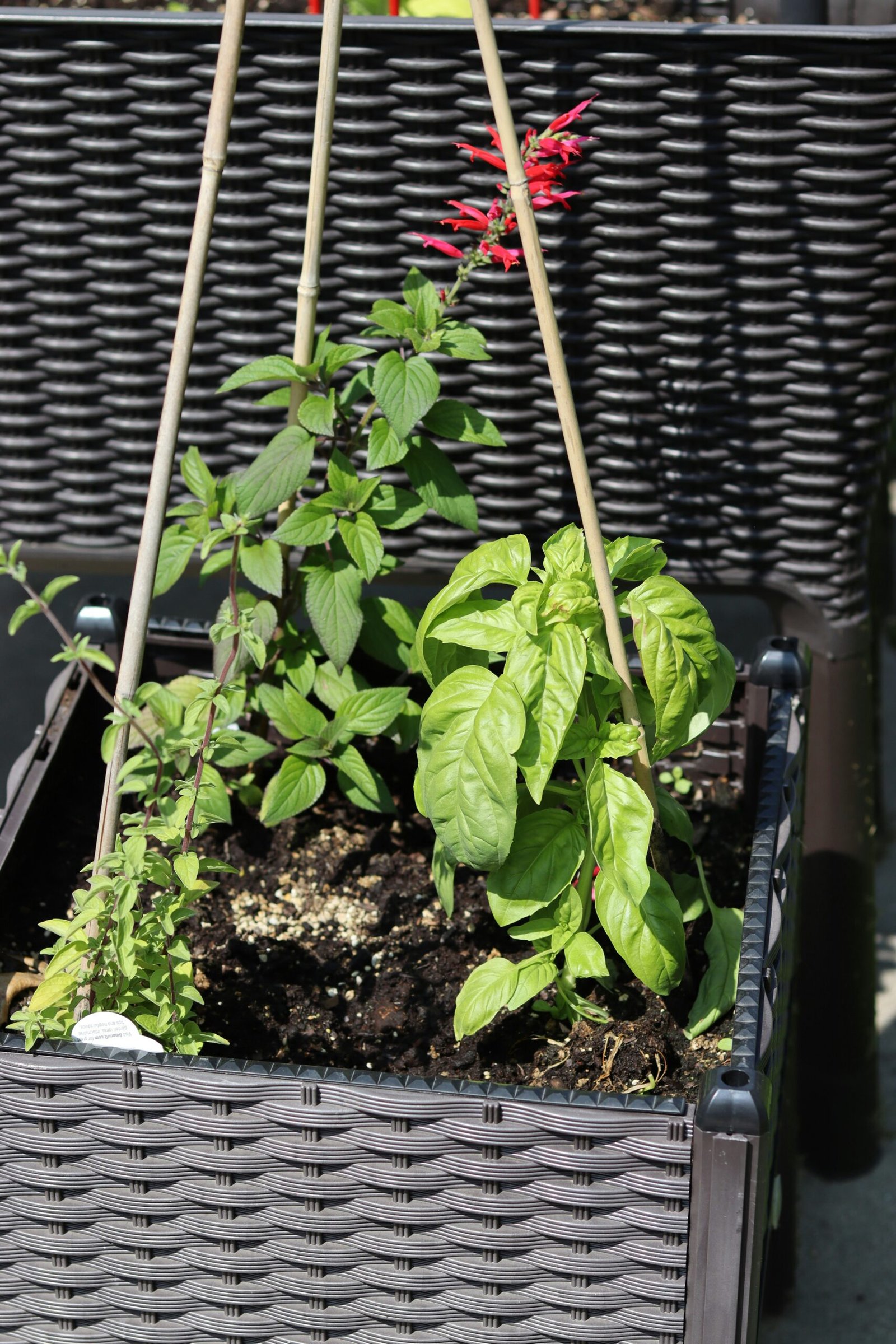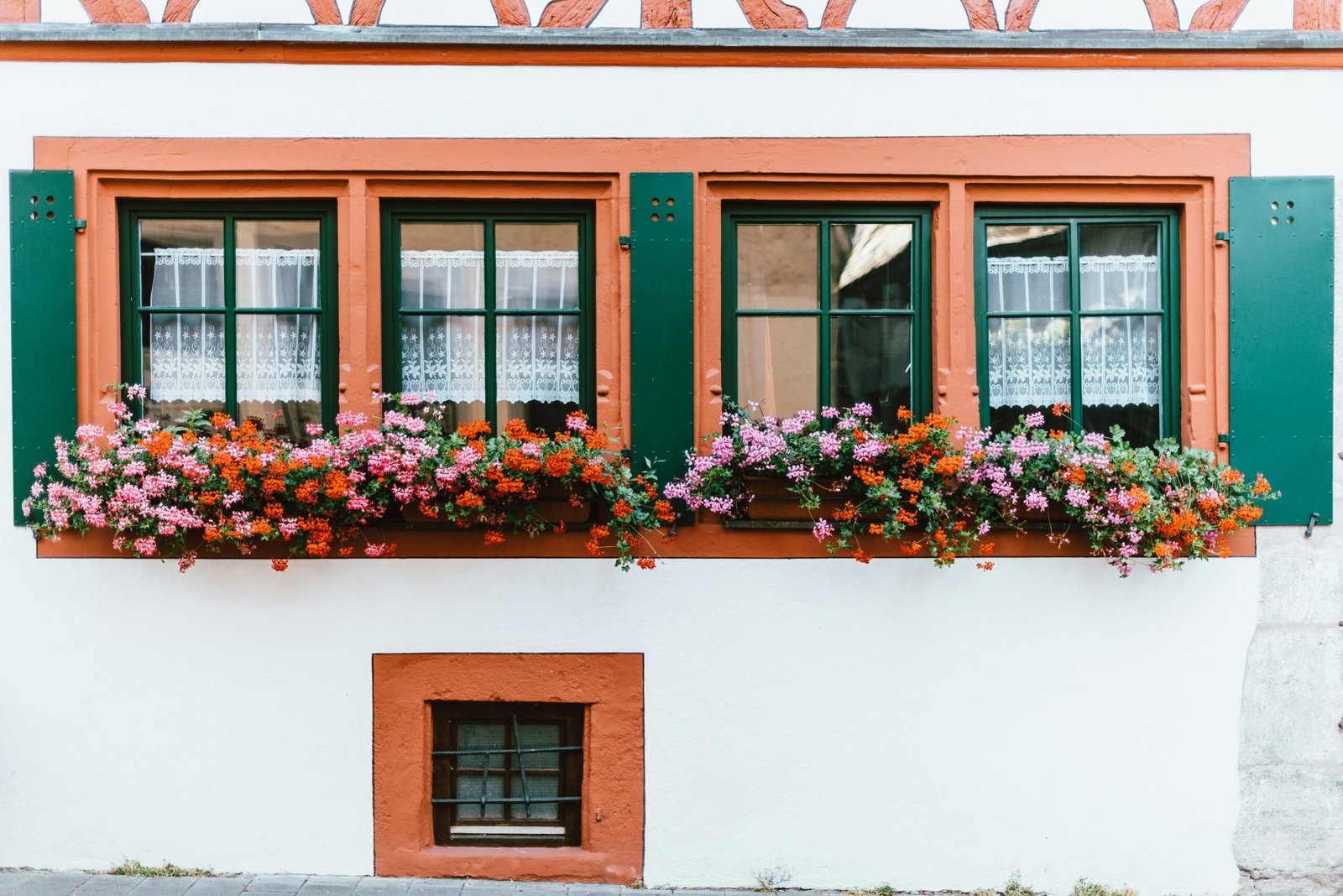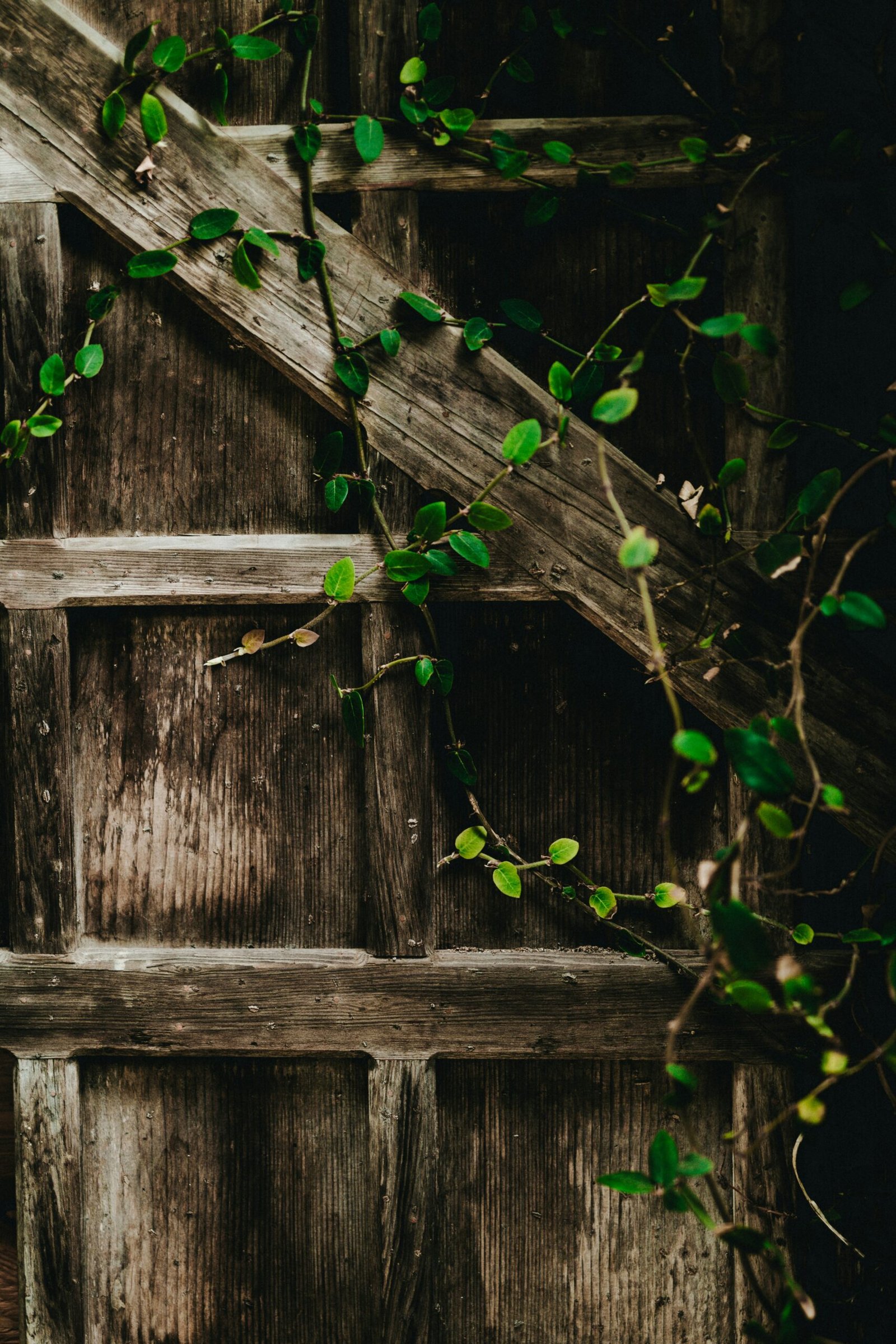Introduction to DIY Terrariums
A DIY terrarium is a delightful way to incorporate a touch of nature into your indoor spaces. Essentially, terrariums are miniature gardens housed within containers, usually made of glass, that can thrive with minimal effort. These charming ecosystems bring a variety of benefits, making them an ideal addition to any home.
First and foremost, terrariums can significantly improve air quality. The plants inside a terrarium engage in photosynthesis, during which they absorb carbon dioxide and release oxygen, thereby purifying the air. Furthermore, terrariums bring a serene and calming ambiance to your living space, offering a natural respite from the hustle and bustle of daily life. They also serve as a great conversation starter, showcasing your creativity and nurturing skills.
There are various types of terrariums to consider, primarily categorized as open or closed. Open terrariums are ideal for plants that prefer drier conditions and good air circulation, such as succulents and cacti. On the other hand, closed terrariums create a humid environment, best suited for moisture-loving plants like ferns, mosses, and tropical varieties. Both types have their unique charm and adaptability to different indoor settings, providing plenty of options based on your preference and indoor conditions.
Creating a DIY terrarium is not only an enjoyable project but also a highly low-maintenance hobby. Unlike traditional houseplants, terrariums require minimal watering, as the glass walls help maintain a stable, self-sustaining environment. This makes them perfect for busy individuals or those who are new to plant care. The limited need for attention and space means a terrarium can flourish with little interaction, making it a hassle-free option to keep greenery in your home.
Overall, DIY terrariums offer a practical yet aesthetically pleasing approach to indoor gardening, appealing to both novice and experienced plant enthusiasts. As you explore the intricate world of terrariums, you’ll find that they not only enhance your living space but also connect you to the tranquil beauty of nature.
Materials and Tools Needed
Creating a DIY terrarium is a delightful way to bring a touch of green indoors while expressing your personal style. The process begins with gathering essential materials and tools, each playing a crucial role in the health and aesthetics of your mini ecosystem.
First and foremost, you’ll need a container. This can range from glass jars and bowls to specific terrarium containers available at garden centers. Glass is the preferred material due to its transparency, allowing both light in and visibility of the layered design. Choose a size that suits your space and the scale of your desired terrarium.
Next, small stones or pebbles are essential for creating a drainage layer at the bottom of your container. This layer prevents water from stagnating at the roots of your plants, which could lead to rot. Over the drainage layer, add a thin layer of activated charcoal. This crucial material helps keep the terrarium environment clean by filtering impurities from the water and soil, significantly reducing odors and bacteria buildup.
Potting soil tailored for terrariums is another necessity. It’s typically lighter than garden soil, providing the right balance of moisture retention and aeration. When selecting plants, opt for varieties suited to terrarium environments, such as succulents, mosses, and ferns. Each type has different needs in terms of light and moisture, so consider these factors when choosing your plants. Succulents thrive in open, dry containers, while mosses and ferns prefer closed, humid environments.
Finally, decorative elements like figurines, colored sand, and small ornaments can add a personalized touch to your terrarium. Think of these items as accessories that enhance the visual appeal of your green sanctuary. Ensure these elements are proportionate to the container size and do not overshadow the plants.
Sourcing these materials is convenient, with local garden centers offering a variety of options. Additionally, online retailers provide an extensive selection, often with customer reviews and ratings to help you make informed choices. Whether you prefer to shop locally or online, ensure to gather all the necessary materials and tools before starting your DIY terrarium project.
Step-by-Step Guide to Building Your Terrarium
Creating your own terrarium is a delightful and straightforward process that combines practicality with creativity. Follow these detailed steps to build a stunning indoor garden.
Start by thoroughly cleaning your chosen container. This ensures any residual contaminants or debris do not adversely affect your plants. For the drainage layer, place a layer of small stones or pebbles at the bottom of the container. This layer is essential as it helps prevent waterlogged soil, which could lead to root rot.
Once you have established the drainage layer, add a thin layer of activated charcoal on top. This component is crucial as it acts to keep the terrarium fresh by reducing the build-up of odors and bacteria.
Next, fill the container with a suitable soil mix. The soil should be deep enough to accommodate the roots of your chosen plants, typically around two to three inches high. Choose a soil mix that complements the types of plants you intend to grow; for example, succulents prefer a sandy, well-draining soil.
With the soil in place, begin planting your greenery. Position taller plants towards the back and shorter ones towards the front to create depth and a visually appealing arrangement. Ensure that plants are not overcrowded as each will need space to grow and proper airflow to thrive. Incorporate a variety of textures and leaf shapes for an interesting visual effect, but avoid packing too many plants to prevent competition for resources.
To personalize your terrarium, consider adding decorative elements. Stones, miniature figurines, or pieces of driftwood can enhance the aesthetics and introduce a touch of your personality into the design. Just be careful not to overwhelm the space, keeping the focus on the greenery.
When it comes to maintenance, avoid common pitfalls such as overwatering. Terrariums are self-contained ecosystems, and too much water can cause mold and mildew. Water your terrarium sparingly, depending on the types of plants you have chosen. Additionally, ensure that your terrarium is placed in a location with appropriate lighting conditions, often indirect but bright sunlight.
By following these steps, you can craft a vibrant and healthy terrarium that brings a touch of nature into your indoor space.
Maintaining and Troubleshooting Your Terrarium
Proper maintenance is crucial to ensure your DIY terrarium remains a thriving, miniature ecosystem. One of the most essential aspects of terrarium care is managing the watering schedule. For a closed terrarium, watering should typically be minimal—about every four to six weeks, as the enclosed environment retains moisture effectively. In contrast, open terrariums require more frequent watering, approximately once a week, as they tend to dry out more quickly. Always ensure the soil is moist but not waterlogged to prevent root rot.
Light is another critical factor. Most terrarium plants thrive in indirect light. Position your terrarium near a bright window but shield it from direct sunlight, which can overheat the plants and cause the glass container to act as a magnifying lens. For plants requiring lower light conditions, such as ferns and mosses, low-light areas of your home may suffice. Consider using grow lights if natural light conditions are inadequate.
Temperature regulation is also vital for a healthy terrarium. Most terrarium plants prefer a temperature range of 60°F to 75°F (15°C to 24°C). Avoid placing your terrarium near heating vents, radiators, or air conditioning units, which can create fluctuations harmful to the plants.
Common issues like mold growth and plant diseases might arise. Mold typically occurs when there is excessive moisture or lack of air circulation. Combat this by ensuring proper ventilation and occasionally opening a closed terrarium to let fresh air inside. Remove any moldy sections immediately. Familiarize yourself with signs of plant diseases, such as discoloration or wilting, and treat them promptly with appropriate fungicides or pruning.
The longevity of your terrarium can be extended by regular maintenance. Over time, you may need to refresh the terrarium by replacing old soil or pruning overgrown plants. This ensures the ecosystem remains balanced and aesthetically pleasing. For those looking to expand their terrarium-building skills, consider experimenting with complex landscapes that incorporate various plant species and decorative elements. Additionally, propagation of plants within the terrarium is a rewarding way to diversify your collection.



